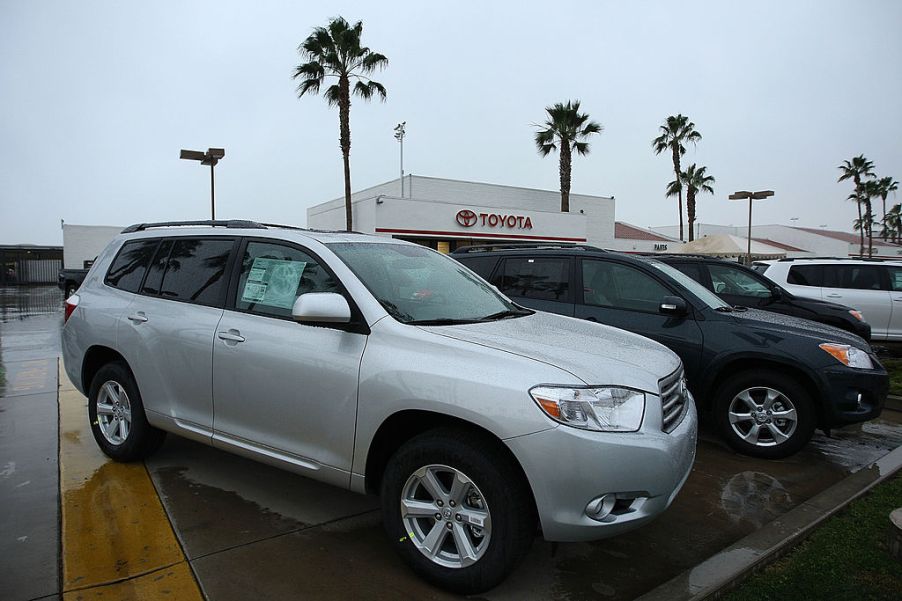
Why Is the Check Engine Light On With My Toyota Highlander?
The Toyota Highlander is one of the brand’s most popular vehicles. With so many on the road, data can help determine common issues and problems the Highlander may have. Surprisingly enough, many owners find their Highlander’s check engine light to be a problem. But other owners can help you find the cause behind your own check engine light issues.
One of the Toyota Highlander’s most common complaints
RepairPal makes it easy to see which complaints are most common for Highlander owners, listing 11 total owner-reported problems for Highlanders from all model years. Some of these complaints include oil leaks, engine issues, and more.
The most-reported complaint comes from more than 100 owners, regarding problems with oil leaks and loss of oil pressure. Out of those 11 complaints, however, three involve the Toyota Highlander’s check engine light coming on. And that makes for nearly 200 owners reporting an illuminated check engine light; more than any other category.
Compiling data from its own owner-reported problems, CarComplaints.com finds that the most common complaints reside in the engine category. What makes this so important is that there are many Highlander owners reporting serious problems with the engine, but also many that report issues with the check engine light.
Coincidences rarely occur in the automotive world. So why does the check engine come on in the Highlander? And why is it so common?
The check engine light: why is it on in my Highlander?
There are a variety of reasons one of your vehicle’s warning lights will light up your dashboard. It is important to note that there are many common reasons a check engine light will come on, no matter the vehicle make and model.
According to Edmunds, something as simple as a loose gas cap can trigger the check engine light. But with the Toyota Highlander, a common problem may indicate deeper problems.
The three check engine light issues reported to RepairPal help offer some insight into the common Highlander problem. This warning light is designed to alert you to potential issues, so are there deeper problems with the Toyota Highlander?
Nearly 70 owners report that their Highlander’s check engine light came on due to a displaced hose from the air filter housing. But 59 occurred due to “failed oxygen sensor component” and 16 because of a failed EVAP control valve. While some owners report having problems near 100,000 miles, others see a check engine light as early as 2,000 miles after purchase.
What to do if your Toyota Highlander’s check engine light comes on
The check engine light can mean a variety of things, working as a warning system signaling you to some type of trouble in your Highlander. But because the check engine light can signal so many different problems, it’s important to get your vehicle checked by a professional. Some causes may be simple to fix, but others can be much more serious. This is why ignoring your check engine light could result in tragedy.
According to High Country Toyota, the first thing to do when your check engine light comes on is to look at your manual. Your Toyota Highlander’s manual can help you understand why it may have come on. Also, pay attention to other problems or indications your vehicle is giving you.
Are there any other lights on? From a loose gas gap to engine failure, there are a variety of things that could be wrong as indicated by the check engine light. If your Toyota Highlander’s check engine light comes on, it’s essential to seek the help of a professional as soon as possible.


